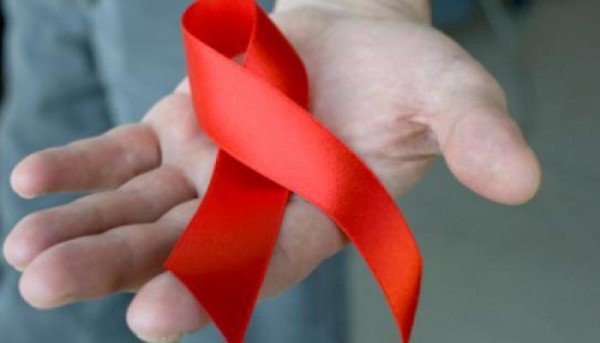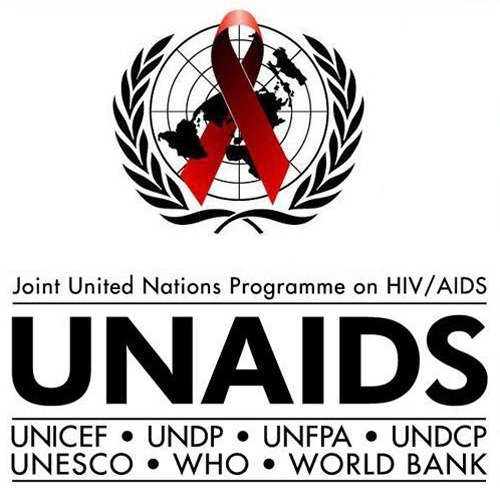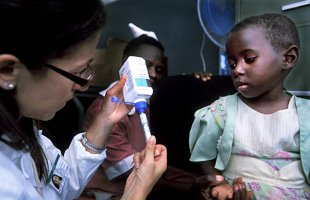Home Tags Posts tagged with "unaids"
unaids
According to a United Nations AIDS report, the goal to get HIV treatment to 15 million people by the end of 2015 has already been met.
The landmark figure was reached in March – nine months ahead of schedule.
It follows decades of global efforts and investment to get antiretroviral drugs to those in need – such as people living in sub-Saharan Africa.
In 2000, when the UN first set goals to combat HIV, fewer than 700,000 people were receiving these vital medicines.
According to UNAIDS, which has a report out today, the global response to HIV has averted 30 million new HIV infections and nearly eight million AIDS-related deaths since the millennium.
Over the same time frame, new HIV infections have fallen from 2.6 million per year to 1.8 million, and AIDS-related deaths have gone down from 1.6 million to 1.2 million.
Meanwhile, global investment in HIV has gone up from $4.8 billion in 2000 to more than $20 billion in 2014.
And concerted action over the next five years could end the AIDS epidemic by 2030, says UNAIDS.
However, progress has been slower in some areas.
A major gap seems to be in awareness of HIV status, which is the biggest barrier to treatment access, says the report.
And treatment access for children has lagged behind adults – although this is now improving.
The proportion of children living with HIV who receive antiretroviral therapy almost doubled between 2010 and 2014 (from 14% to 32%), but coverage “remains notably lower than it does for adults”, says the report.
Even though new HIV infections have gone down, there is still an unacceptable number of new HIV infections each year, contributing to the burden of the epidemic.
In 2014, sub-Saharan Africa accounted for 66% of all new HIV infections. And at the last headcount, there were an estimated 25.8 million people in this region living with HIV. The estimated count for the whole world was 36.9 million.
This year sees the switch from Millennium Development Goals to broader Sustainable Development Goals.
Ban Ki-moon, Secretary General of the United Nations said: “The world has delivered on halting and reversing the AIDS epidemic.
“Now we must commit to ending the AIDS epidemic as part of the Sustainable Development Goals.”
The report says the next five years will be critical and recommends front-loading investment to “sprint” towards an ambition of ending the AIDS epidemic by 2030.
According to a report by the United Nations AIDS agency, there is a chance the AIDS epidemic can be brought under control by 2030.
It said the number of new HIV infections and deaths from AIDS were both falling.
However, it called for far more international effort as the “current pace cannot end the epidemic”.
And charity Medecins Sans Frontieres warned most of those in need of HIV drugs still had no access to them.
The report showed that 35 million people around the world were living with HIV.
There were 2.1 million new cases in 2013 – 38% less than the 3.4 million figure in 2001.
AIDS-related deaths have fallen by a fifth in the past three years, standing at 1.5 million a year. South Africa and Ethiopia have particularly improved.

UNAIDS report said the number of new HIV infections and deaths from AIDS were both falling
Many factors contribute to the improving picture, including increased access to drugs. There has even been a doubling in the number of men opting for circumcision to reduce the risk of spreading or contracting HIV.
While some things are improving, the picture is far from rosy.
Fewer than four in 10 people with HIV are getting life-saving antiretroviral therapy.
And just 15 countries account for three-quarters of all new HIV infections.
The report said: “There have been more achievements in the past five years than in the preceding 23 years.
“There is evidence about what works and where the obstacles remain, more than ever before, there is hope that ending Aids is possible.
“However, a business-as-usual approach or simply sustaining the Aids response at its current pace cannot end the epidemic.”
Michel Sidibe, the executive director of UNAIDS, added: “If we accelerate all HIV scale-up by 2020, we will be on track to end the epidemic by 2030, if not, we risk significantly increasing the time it would take – adding a decade, if not more.”
Dr. Jennifer Cohn, the medical director for Medecins Sans Frontieres’ access campaign, said: “Providing life-saving HIV treatment to nearly 12 million people in the developing world is a significant achievement, but more than half of people in need still do not have access.”
In Nigeria, 80% of people do not have access to treatment.
Dr. Jennifer Cohn added: “We need to make sure no-one is left behind – and yet, in many of the countries where MSF works we’re seeing low rates of treatment coverage, especially in areas of low HIV prevalence and areas of conflict.
“In some countries, people are being started on treatment too late to save their lives, and pregnant women aren’t getting the early support they need.”
[youtube YwUmdpUIoW8 650]
According to a UN report, the number of HIV infections and AIDS-related deaths has fallen dramatically last year.
Death rates fell from 2.3 million during its peak in 2005 to 1.6 million last year, says UNAIDS.
The number of new HIV infections fell by a third since 2001 to 2.3 million.
Among children, the drop was even steeper. In 2001 there were more than half a million new infections. By 2012 the figure had halved to just over a quarter of a million.
The authors put the fall in deaths and infection rates in children down to better access to antiretroviral drugs which help suppress the virus.
Without treatment, people with HIV can go on to develop AIDS which makes simple infections deadly.
By the end of 2012 almost 10 million people in low and middle income countries, including South Africa, Uganda and India, were accessing antiretroviral therapy, according to the report.

The number of HIV infections and AIDS-related deaths has fallen dramatically last year
The improved access is being attributed to drugs being more affordable and available in communities, as well as more people coming forward for help.
According to UNAIDS, the world is “closing in” on its Millennium Development Goals to stop and reverse the AIDS epidemic by 2015.
But it says the world can go beyond its target of getting 15 million people on HIV treatment by 2015. The World Health Organization has now revised its guidelines making even more people eligible for treatment.
The report also found that progress has been slow in providing HIV services to people who are most at risk of infection, like those who inject drugs.
And it highlights the need to do more to deal with violence against women and girls. They make up a key group of people vulnerable to infection.
Bev Collins, Health Policy Advisor at Doctors without Borders said: “Huge leaps forward have been made to make sure that millions of people – especially in the developing world – can access lifesaving HIV treatment at an affordable price.
“But this is no time for complacency. We need to keep on rolling out access to better treatment strategies, expanding access to accurate, cost-effective testing, and to care”
The UN’s latest assessment of global cases of HIV/AIDS shows there has been a further drop in new infections among children.
There were 330,000 new infections in children last year – the figure is 24% lower than in 2009.
But the report by UNAids also warns “significant additional effort is required” if broader targets to tackle HIV/Aids are to be achieved by 2015.
The agency’s director said the pace of progress was speeding up.
Overall, 34 million people around the world are now thought to have the virus that causes Aids.
The number of new infections in adults has stayed broadly stable for the past four years – at about 2.5 million new cases a year.
Many more people with HIV now receive life-saving drugs which keep the virus under control. But the report estimates seven million people who need treatment still do not have it.

The UN’s latest assessment of global cases of HIV-AIDS shows there has been a further drop in new infections among children
Sub-Saharan Africa remains the most severely affected part of the world, though some countries there have made impressive efforts in reducing fresh cases.
The executive director of UNAids, Michel Sidibe, said: “Ethiopia, Malawi and Botswana have achieved big reductions in new infections, showing they are capable of controlling the epidemic.
“Twenty-five countries have reduced the number of new infections by more than 50%.
“In general, we’ve moved from a phase of political rhetoric to programmes being implemented and having an effect.
“But some countries aren’t using the right strategies – Russia, for example, where infections are still growing.”
The report also shows significant increases in AIDS-related deaths in Eastern Europe, Central Asia, the Middle East and North Africa.
UNAids is monitoring progress against targets such as reducing sexual transmission of HIV by 50% by 2015, and providing antiretroviral therapy to all 15 million people who need it.
The report shows where challenges remain. For example, it says there needs to be a scaling up of efforts to offer circumcision to men, which trials have shown is effective in preventing some new infections.
And it describes how “intensive efforts” are under way to find effective non-surgical approaches to circumcision – avoiding the need for scalpels or stitches – so that trained nurses could carry out the procedure rather than doctors.
Dr. Manica Balasegaram, Executive Director of Médecins Sans Frontières/Doctors Without Borders Access Campaign, said: “Scaling up HIV treatment to 15 million people from 8 million today is feasible and has the crucial triple benefit of reducing illness, reducing death, and reducing the risk of transmission.”
At least 10 Zimbabwean MP have been circumcised as part of a campaign to reduce HIV and AIDS cases.
A small makeshift clinic for carrying out the procedures was erected in Parliament House in the capital Harare.
Blessing Chebundo, chairman of Zimbabwe Parliamentarians Against AIDS, said his main objective was to inspire other citizens to follow suit.
Research by the UN has suggested male circumcision can reduce the spread of HIV and AIDS.
A report by UNAIDS and the World Health Organisation (WHO) said the risk of HIV infection among men could be reduced by 60%.
More than a million people in Zimbabwe are believed to be HIV-positive, with about 500,000 receiving anti-retroviral treatment.
The country was one of 13 African states identified in 2007 as a priority for the development of male circumcision programmes by the WHO and UNAIDS.

At least 10 Zimbabwean MP have been circumcised as part of a campaign to reduce HIV and AIDS cases
Blessing Chebundo said more than 120 MPs and parliamentary staff had shown an interest in the circumcision programme.
At least 10 MPs and 13 other people had the procedure performed.
Blessing Chebundo was the first to undergo the 10-minute operation.
He said there was a possibility that some members of the executive may also attend, including President Robert Mugabe.
The circumcision programme had attracted a lot of attention in Zimbabwe, and had divided opinion.
The issue was raised in parliament in September 2011, when Deputy Prime Minister Thokozani Khupe made a plea to her fellow politicians.
At the time, many MPs shunned the idea.
As well as a clinic in parliament, the initiative has seen a tent set up across the road from parliament, where counselling sessions will be held.
Dr. Owen Mugurungi, Director for AIDS and TB unit with the Ministry of Health and Child Welfare, applauded those involved, the Zimbabwe Mail reported.
“We are happy with this initiative and we are happy more leaders will come on board,” he was quoted as saying.
How circumcision may protect against HIV infection?
Specific cells in the foreskin are thought to be potential targets for HIV infection. Following circumcision, the skin under the foreskin becomes less sensitive and is less likely to bleed, reducing the risk of infection.
When AIDS first began to emerge in Africa, researchers noted that men who were circumcised seemed to be less at risk of infection, but the reasons were unclear.
Trials suggest that male circumcision could reduce the risk of HIV infection, acquired through heterosexual intercourse, by up to 60%.
The WHO says the practice is particularly effective in countries with high HIV rates.
But it is not the whole solution. Promoting safe sex, providing people with HIV testing services and encouraging the use of male and female condoms are all seen as equally important.
Some experts also say there is a danger in sending out a message that circumcision can protect against HIV because it could lead to an increase in unprotected sex.





